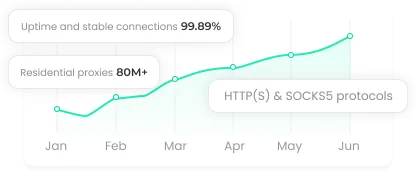Understanding XPath and CSS Selector Techniques for Web Scraping
Finding the right piece of information on a webpage can feel like searching for a needle in a digital haystack. That’s where locators come in. XPath and CSS selectors are two powerful tools for navigating HTML, but each has its own strengths. Knowing which one to use can save you hours of debugging—and frustration.

Understanding XPath
XPath is more than just a tool—it's a language for navigating the structure of HTML and XML. Instead of relying solely on IDs or classes, XPath lets you drill down through nested elements, follow relationships, and even filter by text. Libraries like lxml, Scrapy, and Selenium thrive on XPath queries.
How XPath Works
Think of XPath as a map through the DOM. You can:
Select elements by tag name, attribute, or text
Move forward and backward through the hierarchy
Apply conditions and functions to refine your search
Example Syntax
//div – all <div> elements
//a[@class="link"] – <a> elements with class “link”
ul/li[1] – first <li> inside a <ul>
input[@type="text"]/following-sibling::button – button next to a text input
Advantage of XPath in Web Scraping
Navigate complex hierarchies with precision
Powerful filtering functions like contains() or starts-with()
Fully compatible with Selenium
Disadvantage of XPath in Web Scraping
Queries can get long and complicated
Sometimes slower in browser-based scraping
Dynamically changing DOMs can break deep XPath paths
Understanding CSS Selectors
CSS selectors are the web developer's native language for targeting elements. They're clean, intuitive, and faster in many scenarios. If you're using BeautifulSoup, Scrapy, or browser tools like Puppeteer, CSS selectors can simplify your scraping workflow.
How CSS Selectors Work
CSS selectors choose elements based on type, class, ID, and relationships. They're straightforward, but slightly less powerful for complex DOM navigation compared to XPath.
Example Syntax
div – all <div> elements
.content – elements with class “content”
#main – element with ID “main”
ul > li:first-child – first <li> inside a <ul>
input[type="text"] + button – button immediately following a text input
Advantages of CSS Selectors in Web Scraping
Cleaner, easier to read and write
Often faster than XPath for common tasks
Native support in browsers, widely compatible
Disadvantage of CSS Selectors in Web Scraping
Cannot filter by text content directly
No backward navigation (parent selection)
Less suitable for deeply nested elements
Choosing Between XPath and CSS Selectors
The right tool depends on your needs:
XPath shines when you need precise control, navigate complex hierarchies, or filter by text. Ideal for Selenium or XML-based scraping.
CSS selectors shine when speed, readability, and simplicity matter. Perfect for BeautifulSoup, Scrapy, or browser automation.
Practical Scraping Examples
Using XPath
articles = tree.xpath('//div[@class="article"]')
for article in articles:
title = article.xpath('.//h2/text()')[0]
url = article.xpath('.//a/@href')[0]
date = article.xpath('.//span[@class="date"]/text()')[0]
print(f"Title: {title}\nURL: {url}\nDate: {date}\n")
Use XPath for complex, text-sensitive, or deeply nested scraping tasks.
Using CSS Selectors
articles = soup.select("div.article")
for article in articles:
title = article.select_one("h2").text
url = article.select_one("a")["href"]
date = article.select_one("span.date").text
print(f"Title: {title}\nURL: {url}\nDate: {date}\n")
Use CSS selectors for clean, readable, fast queries.
Protecting Your Scraping with Proxies
Even the best locators can't overcome anti-scraping defenses. Websites often deploy rate limits, CAPTCHAs, or IP bans. That's where proxies become indispensable:
Rotating residential proxies distribute requests across multiple IPs
Datacenter proxies deliver high-speed scraping for less restrictive sites
Mobile proxies help when scraping mobile-optimized pages
Pairing the right proxies with your scraping strategy ensures smooth, uninterrupted data collection, even on protected sites.
Final Thoughts
Mastering web scraping isn't just about choosing the right locators—it's about combining the right tools, strategies, and safeguards. By understanding when to use XPath or CSS selectors, and protecting your scraping with reliable proxies, you can navigate complex webpages efficiently, gather accurate data, and stay ahead of anti-scraping measures.


















































